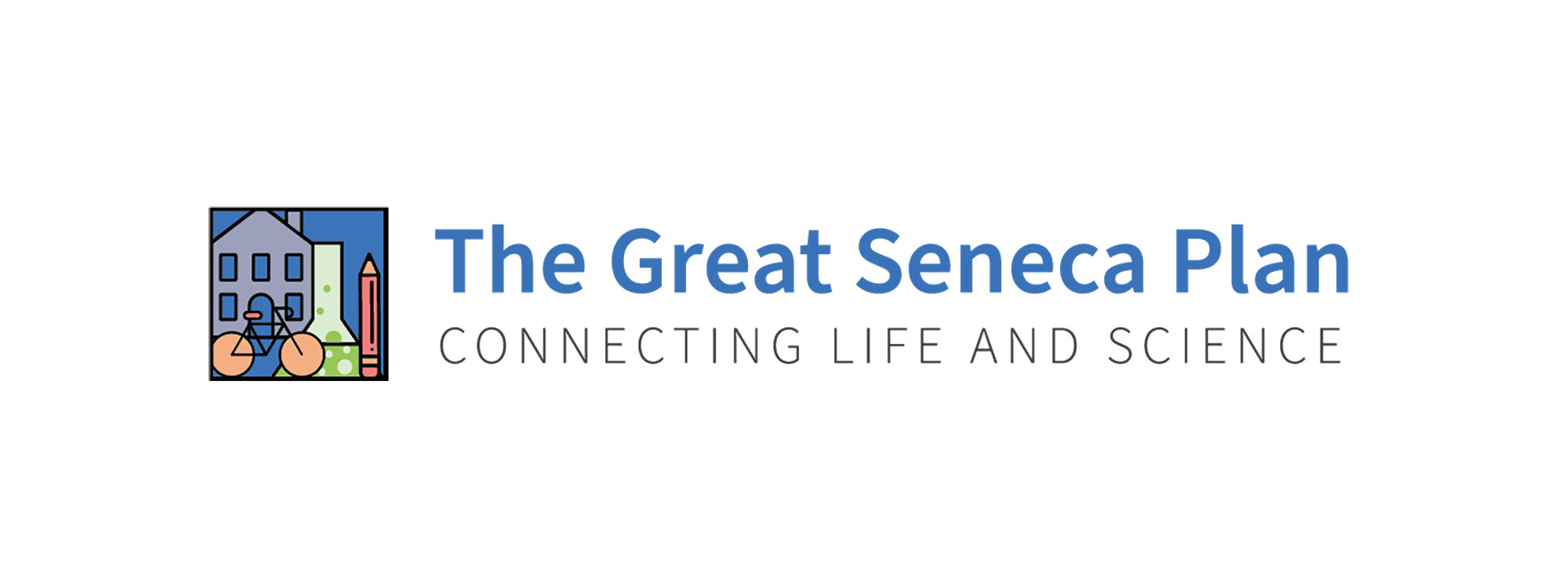
Great Seneca Plan examines the vision set in the 2010 Great Seneca Science Corridor Master Plan to support a globally recognized biotechnology hub in the Shady Grove Life Science Center
WHEATON, MD – The Montgomery County Planning Board, part of The Maryland-National Capital Park and Planning Commission (M-NCPPC), approved the Great Seneca Plan: Connecting Life and Science Scope of Work at its May 26 meeting. Montgomery Planning staff laid out an approach that builds on the vision set in the 2010 Great Seneca Science Corridor Master Plan to support a globally recognized biotechnology hub with housing options and recreational opportunities.
View the Great Seneca Plan: Connecting Life and Science Scope of Work.
View the Great Seneca Plan: Connecting Life and Science flyer: 汉语 | Español.
The Great Seneca area of Montgomery County consists of the area that surrounds the Adventist Healthcare Shady Grove Medical Center and the Universities at Shady Grove, as well as the National Institute of Standards and Technology (NIST) and the Londonderry, western Quince Orchard, Rosemont, and Oakmont neighborhoods. It is in the heart of the I-270 corridor. The plan follows the 2021 Great Seneca Science Corridor Minor Master Plan Amendment, adopted in December 2021. The 2021 Amendment, also known as “Phase One,” served as a technical amendment to evaluate the staging requirements of the 2010 plan.
The Great Seneca Plan will evaluate trends and conditions and develop recommendations to align the vision, recommendations, and overall staging requirements for the area with the county’s adopted plans, policies, and priorities. It will also provide an opportunity to integrate policy guidance from countywide plans and initiatives, including Corridor Forward: The I-270 Transit Plan, the Pedestrian Master Plan, Complete Streets Design Guide, Thrive Montgomery 2050, the Climate Action Plan, and Vision Zero, as well as employ a robust outreach and engagement strategy to create a plan that advances racial equity and social justice. Community members can currently participate in the planning process by responding to a questionnaire on how they envision the future of the plan area.
Montgomery Planning staff will evaluate the existing zoning designations in the Great Seneca Plan area. Staff will explore right-sizing zoning—examining if the zoning allocated assumes too much, too little, or just enough height and density. Staff will also assess 2010 staging requirements by reviewing the anticipated and actual impacts of development and evaluating the original objectives and unintended effects. Staff will explore maintaining, amending, or eliminating staging requirements. Additionally, Montgomery Planning staff will review the following elements as part of a holistic approach to shaping the future of the Great Seneca area:
- Community identity and character
- Housing
- Economic development
- Transportation, access, and connectivity
- Environmental resilience
- Urban design
- Parks and open space
- Community facilities
“This plan is really important because it is intended to not only support the life sciences industry, which is critical to Montgomery County’s economic growth, but it also looks at how the Great Seneca Plan area can become a more connected community, with well-integrated residential and non-residential uses,” said Montgomery Planning Director Gwen Wright. “It is an important next step to couple new development with investment in and delivery of infrastructure, public facilities, and services to create great communities.”
Great Seneca is the county’s premier life sciences hub and one of the county’s main economic engines. Even as the county experienced slow job growth in many employment sectors, the life sciences industry grew by over 30% between 2010 and 2018. The Life Sciences Center contains more than twice the number of private sector workers in the life sciences industry than those employed in other areas of the county.
“We will create significant opportunities for community feedback and visioning on this plan,” said Maren Hill, project manager. “Through an equitable engagement approach, reaching key stakeholders, we will determine what the future of the area may look like and how we can best enable a version that is equitable, viable, and will carry forward what people love about their community.”
Complete the questionnaire on what you want to see in the Great Seneca area.
Plan timeline:
- May 2022: Scope of Work
- Winter 2021 – Fall 2022: Existing Conditions analysis
- Winter 2022 – Winter 2023: Visioning and community engagement
- Winter – Spring 2023: Preliminary Recommendations
- Spring 2023: Working Draft Plan submitted to Planning Board
- Spring – Fall 2023: Planning Board Work Sessions and Transmittal to County Council
- Summer 2023 – Winter 2024: County Council Review and Approval
- Winter 2024: M-NCPPC Plan Adoption
- Winter 2024: Sectional Map Amendment for Plan implementation
To learn more, visit the Great Seneca Plan: Connecting Life and Science webpage. Stay informed and subscribe to the Great Seneca Plan e-letter.